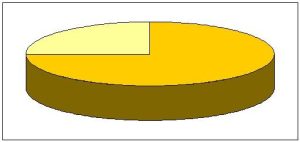
- Woodlands Branch | Tel: 012 997 7913
- Kolonnade Branch | Tel: 012 548 8820
Three primary metals are used in jewellery: gold, platinum and silver. You can find some basic facts about each metal below.
Gold – gold does not corrode, rust, or tarnish, which makes it a popular metal for jewellery. Three different colours of gold are used in jewellery: yellow gold, white gold, and rose gold. The purity of gold jewellery is expressed in carat, represented by the letters “ct” carat is reported in 24ths, which means 24ct gold is 100% gold. Gold is too soft to be used in jewellery in its pure form, so it is typically mixed with other metals. Most jewellery is either 18ct gold (composed of 75% gold) or 9ct gold (composed of 37.5% gold).
Platinum – platinum is the strongest of all the jewellery metals. Platinum does not tarnish or scratch easily, which is why it is the metal of choice for stone settings. Quality platinum jewellery is usually 95% platinum, with the other 5% consisting of palladium, iridium, or ruthenium. The metal will bear the mark “Plat” or “950 Plat.”
Silver – like gold, silver is too soft to be used by itself in jewellery. For this reason, it is mixed with other metals to enhance its durability. One of the most popular jewellery metals is sterling silver, which is 92.5% silver and 7.5% copper.
Throughout history gold was used in decorating tombs and houses of worship on all continents. However, the first objects made of gold, dated 5 millenniums ago, were discovered in Egypt.
British explorers Howard Carter and Lord Carnarvon in 1923 found the tomb of Tutankhamen filled with state of the art gold articles. In 1876 a notorious German treasure hunter discovered a huge number of different works of art made of pure gold in the ancient citadel of Mycenae located in the mid-eastern Peloponnese of Greece.
These beautiful objects of art were crafted by local artists in the middle of the 4th century B.C. Gold has always occurred in its pure form, not mixed with other metals. Because of it’s colour and durability, gold remains the favorite material for creating the most admirable objects of art and jewellery.
Pure (100%) gold is too soft, and is usually mixed with other metal alloys (silver, copper, nickel and zinc) to make it stronger and more durable for jewellery.
What is a carat? – The carat indicates the amount of pure gold in the metal. The higher the carat, the higher the percentage of pure gold in the metal.
Percentage of Pure Gold by carat
24ct

18ct

9ct

Why is 18ct gold more valuable than 9ct gold? – 18ct gold contains a higher (75%) percentage of pure gold than 9ct gold (37.5%).
What kind of markings can be found on gold jewellery? – You should see a marking such as ‘9ct’, “375” or ’18ct’, 750 to indicate the carat, and you may sometimes also see the manufacturers registered trademark or the country of origin. What is the difference between yellow, white and rose gold?
Pure gold (which is always yellow) is too soft for making jewellery. The metal alloys that are mixed with pure gold for strength can also modify the resulting colour to produce different shades of yellow, white, and pink gold. White gold was originally developed to imitate platinum. What other factors determine the value of a gold jewellery piece?
There are many other factors that determine the value of a gold jewellery piece:
Weight – gold is sold by weight – grams (g), the heavier the piece, the higher the gold content, therefore it is more expensive.
Design – designer jewellery is more expensive, especially if it is a one of a kind piece.
Finish – special finishes to the metal such as matte, or sand-blasted finish add to the cost of the gold jewellery piece.
How do I care for my gold jewellery?
You could take good care of your jewellery by following a few simple steps: Avoid contact with soap, perfume, cosmetics and hairspray. Take chains and bracelets off at night, and store them flat to prevent them from breaking. Use a gentle soft cloth to polish gold jewellery after wearing.
For more information visit Bullion Gold Education or Wikipedia http://en.wikipedia.org/wiki/Gold
As a precious metal Platinum was first introduced close to the end of the 19th century. The main characteristics of platinum is a deep luster and a vivid white colour. Platinum is much more valuable than pure gold or palladium. Platinum is often used to produce the finest jewellery and for setting expensive gemstones. Platinum is one of the most popular metals of choice for ring settings because the strength and colour of platinum magnify the brilliance and depth of diamonds and most precious gems.
Because of its density and weight, you can feel the difference between platinum and other precious metals when comparing different types of jewellery. Platinum is usually marked with the following symbols: PL, PT, PLAT, 950 or PT950. Since platinum is the purest metal, it rarely causes an allergic reaction. Worldwide there is an increased interest in platinum jewellery, with wedding and engagement rings being the strongest selling category. The platinum group of metals, is comprised of six closely related metals: Platinum, Palladium, Rhodium, Ruthenium, Iridium and Osmium.
Silver is the most reflective and affordable of the precious metals. Its lower price permits bold, innovative looks. Sterling silver jewellery is often fashioned by top designers and can range in price from hundreds to thousands of Rands. Sterling silver is the standard of quality for jewellery containing 92.5% silver and 7.5% copper.
